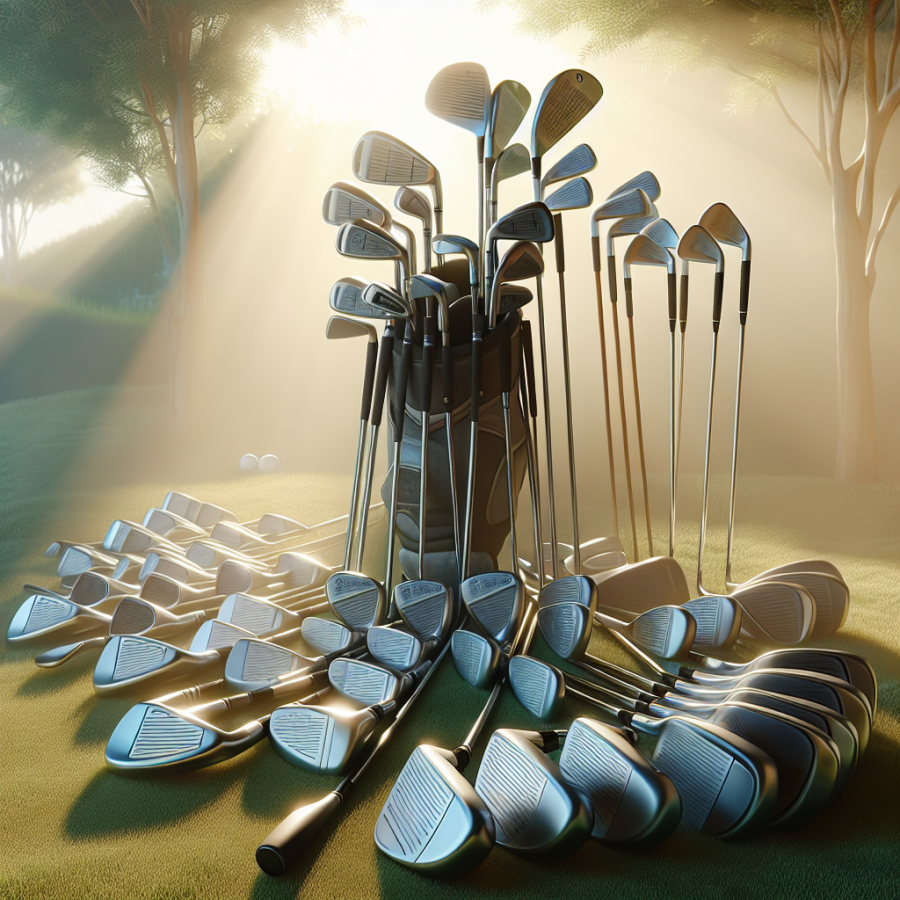Deconstructing the Price: Essential Factors that Determine the Cost of Golf Clubs
Understanding the price of golf clubs requires a deep dive into multiple factors that influence the costs significantly. Each part of the golf club plays an integral role in deciding its final price. Here are some essential elements taken into account when determining the cost of golf clubs.
Material Quality
The quality of materials used in the production of a golf club is one of the most significant factors affecting its pricing. For instance, if a club is made with stainless steel, it will cost considerably less than clubs made with more exclusive materials, like titanium or carbon composite. The shaft material also plays a role in the price. Shafts can be made from steel, graphite, or multi-material compounds, each with a different price tag.
Brand Value
Brand reputation and value have a significant impact on the cost golf clubs. Top-tier brands like Callaway, TaylorMade, and Titleist typically cost more than their counterparts due to the quality and high-performing reputation they maintain in the market. Such brands also invest heavily in research and development, which contributes to the price hike.
Club Type
The type of the golf club being purchased has a substantial impact on its cost. Drivers, which are used to hit long-distance shots, are generally more expensive than irons or putters. Hybrid clubs, which combine the qualities of both woods and irons, also come with a slightly higher price tag.
Technological Features
With advancements in golf technology, manufacturers now incorporate features such as adjustable weighting systems, face inserts, and new head designs into their golf clubs. These features often appeal to more advanced players willing to pay a premium for enhanced performance.
Customization
If golf clubs are personalized, such as changing the length, grip size, or adding custom paint fills, the cost will likely increase. Customizing a club can improve a player's comfort, control, and performance but comes at a higher cost.
Production and Marketing Costs
Manufacturers also factor in production and marketing costs into their pricing. For example, if a company uses labor-intensive processes or high-precision machining to produce their clubs, the cost will increase. Additionally, clubs that are heavily promoted via TV, print, or online advertising may have higher prices to cover these expenses.
In conclusion, several factors determine the cost of golf clubs, and it's essential to understand these aspects to make an educated purchasing decision. Hitting the golf course isn't cheap, but the value that quality golf clubs offer can certainly help enhance your game performance, making the investment worthwhile.
Read also:
Slope Showdown: Snowboarder vs. Skier Epic Rivalry
Beyond the Price Tag: A Closer Look at the Real Worth of Quality Golf Clubs
Perhaps the first misconception that many casual golfers hold is that the price of the golf club is solely representative of its brand name value. Much like designer fashion, the assumption is that one pays a hefty premium for the brand name engraved on the club. However, the cost of quality golf clubs is dictated by multiple factors, often enclosed within the craftsmanship, materials, technology, and the consistent performance it offers.
A look at the craftsmanship of quality golf clubs can be an enlightening experience. The design process involves precision engineering and rigorous testing stages. Unlike in mass-produced models, there is a considerable amount of manual work involved in the production of high-end golf clubs. Each club is meticulously assembled by experts to ensure perfection. The artistry and attention to detail displayed in this process significantly contribute to the price tag.
The materials used in the production of golf clubs also play a role to its overall cost. High-quality golf clubs are typically made from superior materials such as Titanium, Carbon Steel, or Stainless Steel. Each of these materials provides distinct advantages. For instance, Titanium is lighter, enabling faster swing speeds, while Carbon Steel offers a softer feel that many golfers appreciate. Higher quality materials drive up production costs, hence contributing to a higher retail price.
It's also important to realize that golf, like most sports today, is becoming increasingly technologically driven. Today’s best golf clubs are a far cry from simpler metal sticks used in the past. Modern golf clubs sport technological advancements such as adjustable weights, vibration-damping materials, aerodynamically sound designs, and more. These sophisticated technologies are incorporated to enhance player performance and, thus, also contribute to the club's overall value.
Moreover, the consistent performance that a quality golf club can provide is arguably the most compelling reason behind its price. A top-quality golf club offers better club-to-ball contact, greater swing speed, and more controlled loft and roll. With a good golf club supporting their game, many players find that their performance improves significantly. Thus, the assured consistency that high-quality golf equipment affords can be considered as a legitimate investment for those serious about improving their golfing skills.
Lastly, the prestige that comes with owning high-quality golf clubs cannot be overlooked. Just like a luxury car or haute couture fashion, branded golf clubs are often seen as a status symbol. Owning and displaying quality golf gear can be a sign of one’s dedication to the sport, thereby contributing to one’s image both on and off the golf course.




